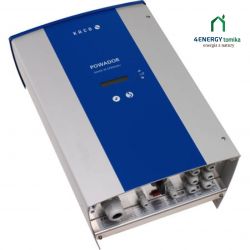Hello groupers.
I have a question, I'm not an electrical expert.
Surely most of you are already familiar with the subject of inverter power and regulations.
Recently, I submitted documents to ENEA for connecting my power plant to the grid.
To my surprise, I found out that the single-phase inverter I have, Kaco 9600, has too much power,
Well, the maximum power that can be connected to the network on one phase is max 3.68 kW.
My question, is it possible to separate the currents into three phases?
Or maybe someone already solved this problem.
I wouldn't want to get rid of a nice inverter and look for something new.
I will add that I installed the installation myself, so I can't complain to the installation company :)
 [/b]
[/b]
I have a question, I'm not an electrical expert.
Surely most of you are already familiar with the subject of inverter power and regulations.
Recently, I submitted documents to ENEA for connecting my power plant to the grid.
To my surprise, I found out that the single-phase inverter I have, Kaco 9600, has too much power,
Well, the maximum power that can be connected to the network on one phase is max 3.68 kW.
My question, is it possible to separate the currents into three phases?
Or maybe someone already solved this problem.
I wouldn't want to get rid of a nice inverter and look for something new.
I will add that I installed the installation myself, so I can't complain to the installation company :)
 [/b]
[/b]


